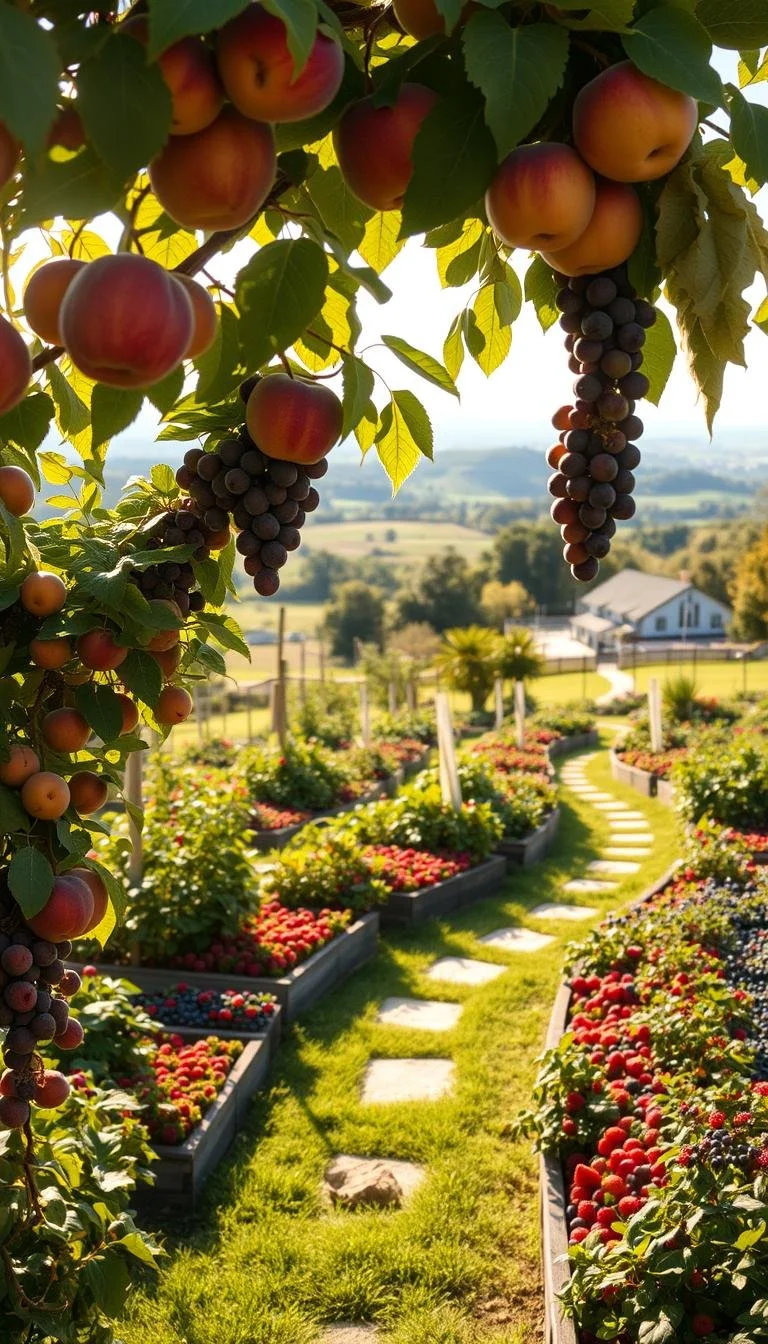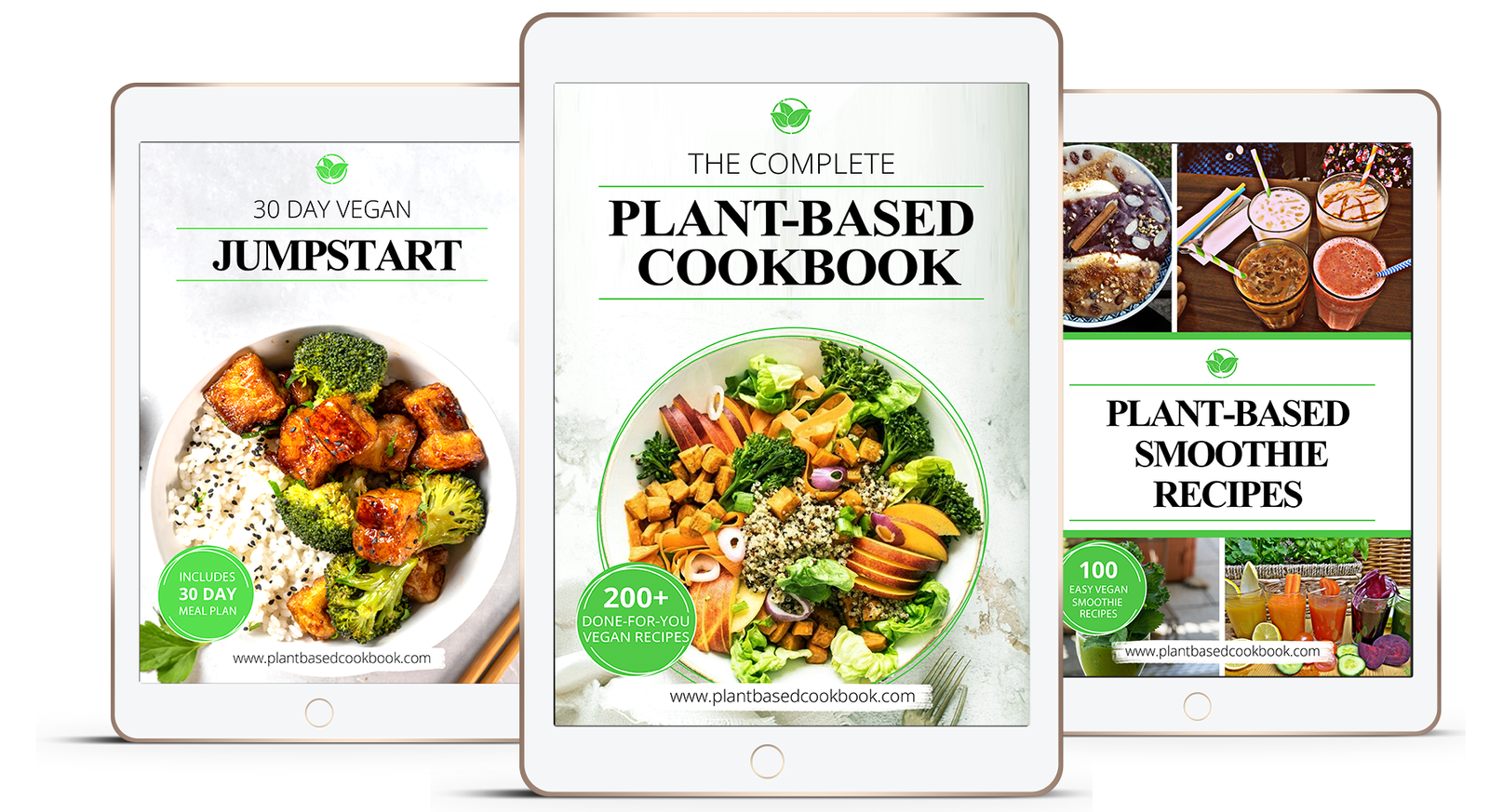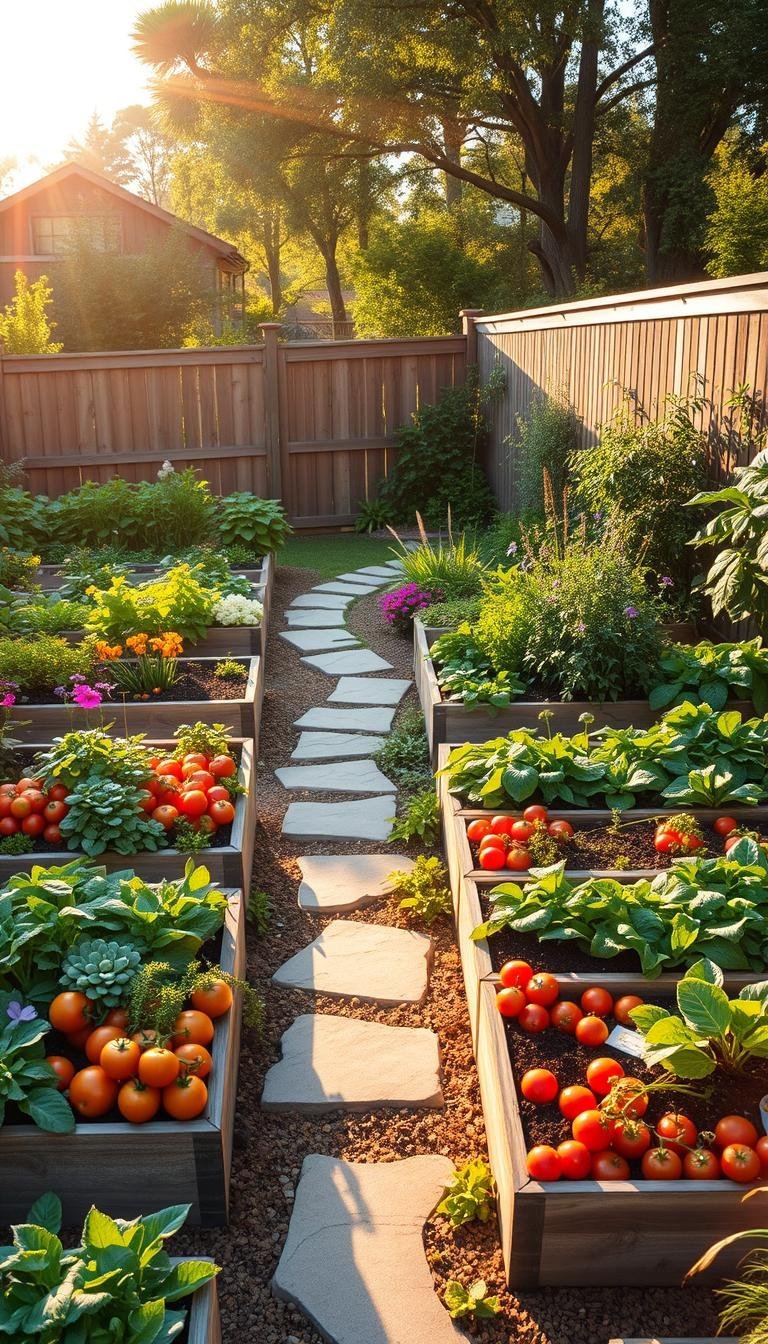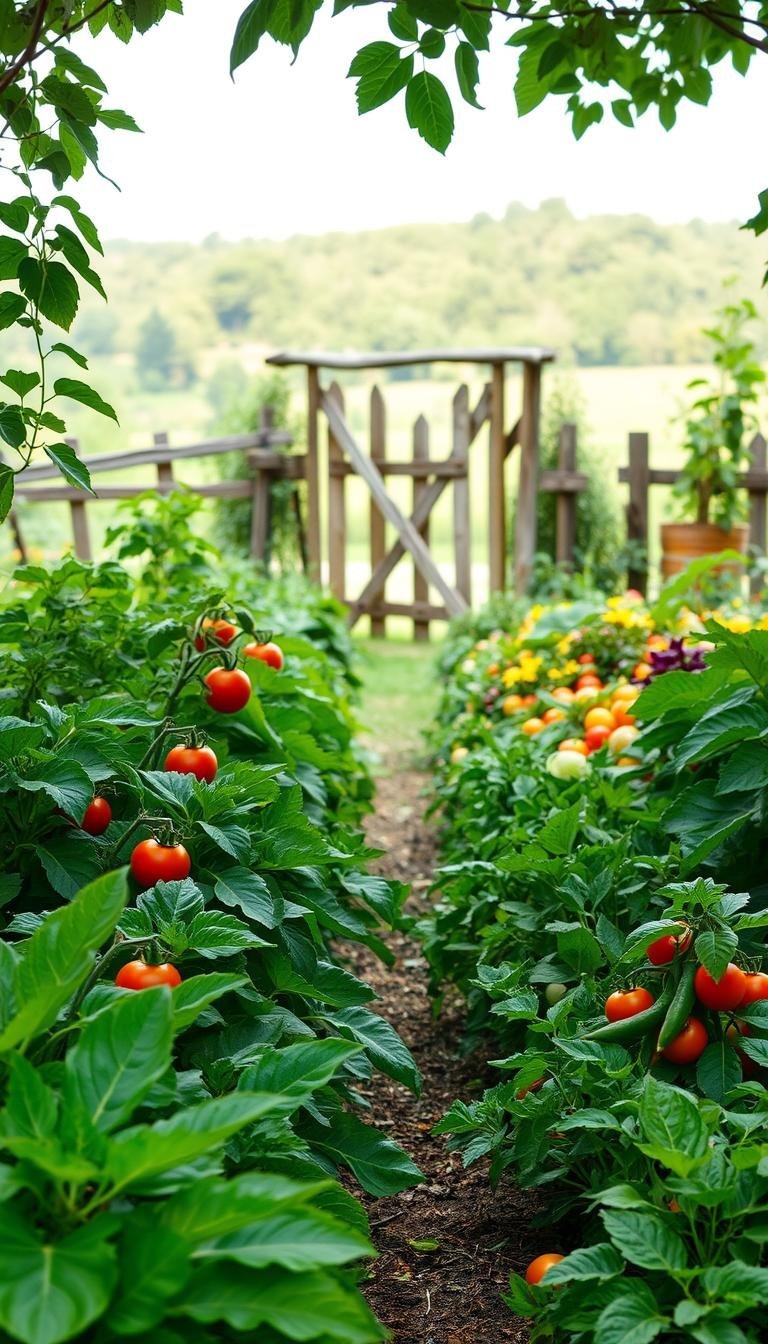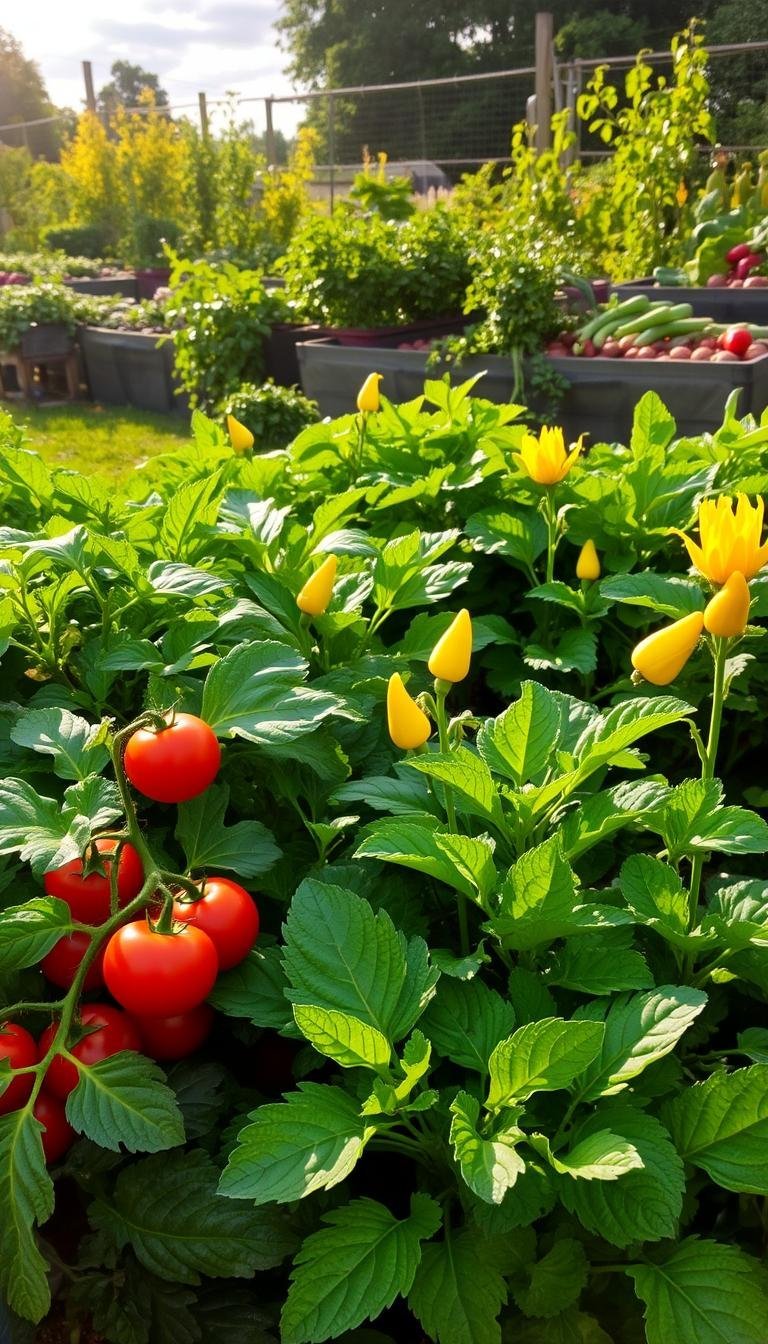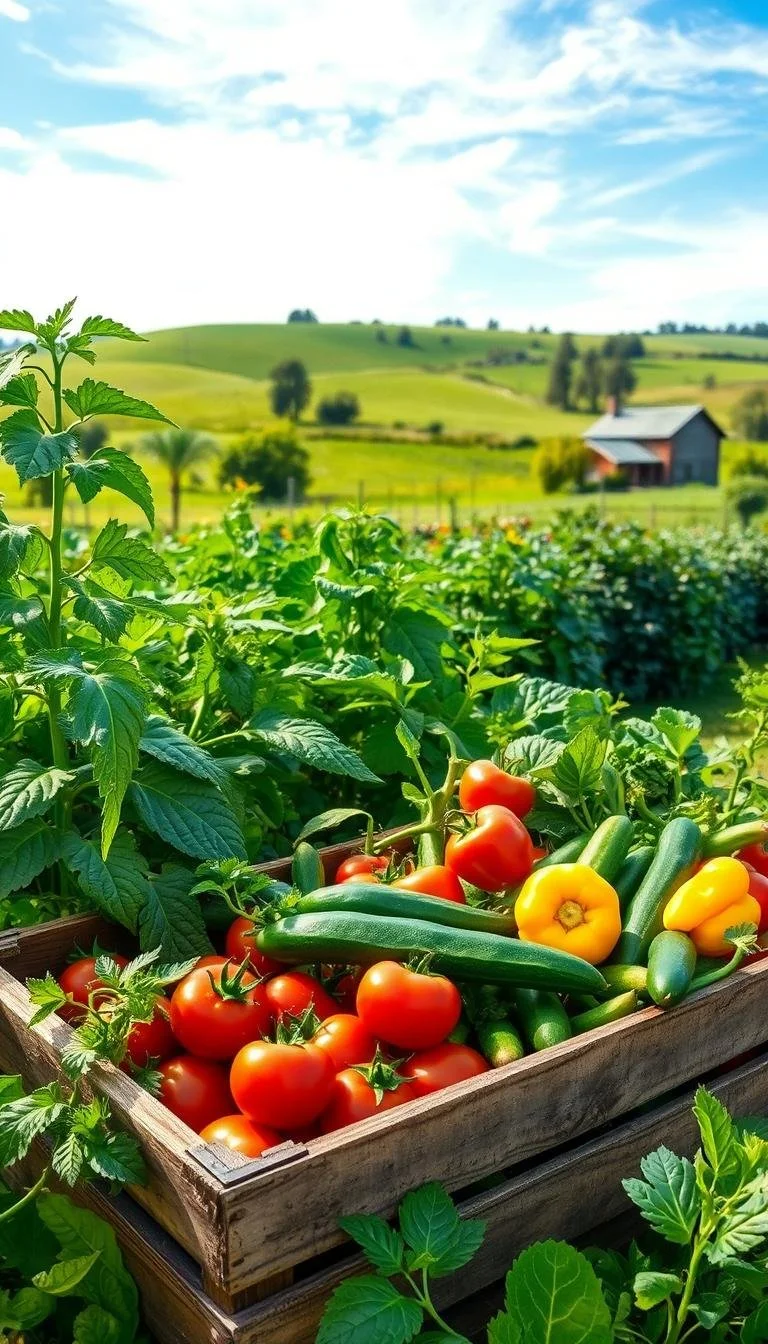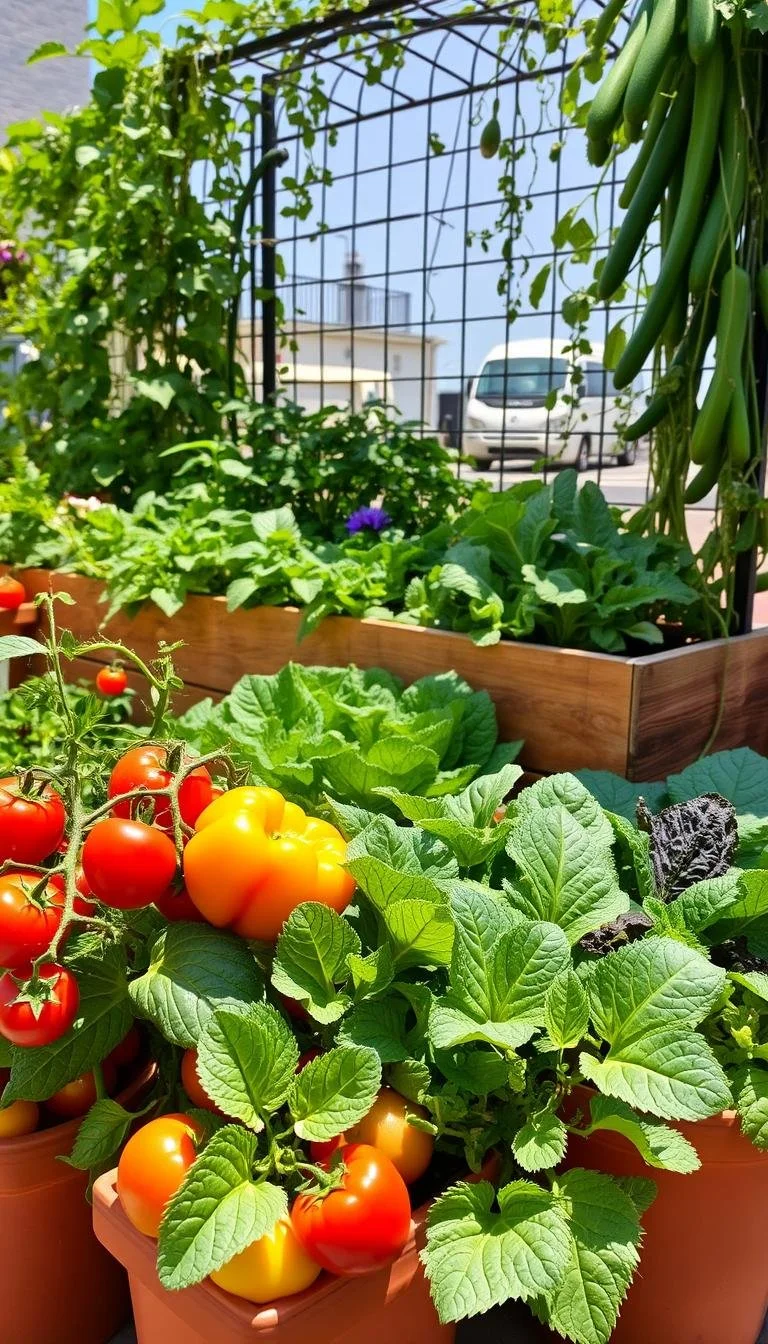(Hey! Some links in this post may be affiliate links — meaning I may earn a small commission if you buy through them, at no extra cost to you. As an Amazon Associate, I earn from qualifying purchases. I only share products I genuinely love and think you’ll find useful too. Read the full disclosure here).
Dreaming of sweet peaches or sun-warmed berries right outside your kitchen door?
You don’t need a huge yard or decades of experience to grow your own delicious fruit. In fact, starting a fruit garden might be the most rewarding—and surprisingly simple—thing you do this year.
Whether you’ve got a balcony, a backyard, or just a patch of sunshine, this guide will walk you through everything: from choosing the right plants to harvesting your own juicy rewards. Let’s turn your outdoor space into a thriving, edible paradise—one plant at a time.
🌿 Want to Take Your Garden to the Next Level?
If you're serious about growing your own food and becoming more self-reliant, The Self-Sufficient Backyard is a must-read...
🌱 Learn MoreContents
- 1 The Benefits of Having a Fruit Garden
- 2 Choosing the Right Location for Your Fruit Garden
- 3 Planning Your Fruit Garden Layout
- 4 Selecting the Best Fruits for Your Garden
- 5 Essential Tools and Supplies for Fruit Gardening
- 6 Planting Techniques for a Thriving Fruit Garden
- 7 Watering and Irrigation Strategies
- 8 Pruning and Maintenance Tips for Fruit Trees
- 9 Harvesting Your Fruit: Tips and Timing
- 10 Creative Ideas for Utilizing Your Harvest
The Benefits of Having a Fruit Garden
Turning your yard into a fruit garden does more than just give you fresh food. It also boosts your health, helps the environment, and saves money. These gardens are full of benefits, from healthy food to eco-friendly practices.

Boosting Your Health and Nutrition
Fruits from your garden are packed with more nutrients than store-bought ones. Berries, apples, and citrus fruits grown in your garden keep their vitamin C and fiber levels high. This makes snacking healthier for everyone.
Studies show families with gardens eat 50% more fruits every day. This shows that having fruits nearby encourages better eating habits.
Environmental Impact of Fruit Gardens
“A single fruit tree reduces carbon emissions equal to driving 26 miles,” notes the USDA. By replacing lawn grass with fruit plants, you can use 30% less water. Native berry bushes attract bees and butterflies, helping local ecosystems.
Composting fruit scraps completes a zero-waste cycle. This makes your garden a haven for nature.
Economic Savings from Homegrown Produce
- Save $500+ annually by growing apples, blueberries, and figs instead of buying them
- Avoid supermarket markups while ensuring organic quality
- Share excess harvests to build community connections
Begin with dwarf fruit trees or raised beds. Even a small 10×10 space can produce $200 worth of peaches each year. Over time, these fruit garden ideas will save you money and taste great.
Choosing the Right Location for Your Fruit Garden
Starting a backyard fruit orchard means picking the perfect spot. You need to think about sunlight, soil, and water. Let’s explore how to make your fruit garden a success.

Sunlight Requirements
Fruits generally need 6–8 hours of sunlight each day. To find the best spot, watch where shadows fall at noon. If your yard doesn’t get full sun, pick plants like raspberries or figs that do well in shade. Tip: Use a sun calculator app to see sunlight patterns over a week.
Soil Quality and Drainage
- Test your soil’s pH with a home kit. Blueberries like acidic soil (pH 4.5–5.5), while apples prefer neutral (6.0–7.0).
- Loosen tight soil and add compost to help water drain. Raised beds are good if your soil holds water.
To check drainage, dig a hole, fill it with water, and see how long it takes to drain. If water stays for a long time, add sand or gravel.
💡 Quick Tip: Strawberries thrive when planted near borage—it boosts pollination and deters pests.
Proximity to Water Sources
Put your garden close to a water source. Drip irrigation uses less water than sprinklers. Also, consider using rain barrels to collect roof runoff for your garden’s water needs.
Even small areas can be great for growing fruits with the right planning. Focus on these key points to design a garden that works well and meets your plants’ needs. Are you ready to design your garden’s layout?
➡️ “See also: Easy Vegetables to Grow at Home”
Planning Your Fruit Garden Layout
Creating a fruit garden layout is all about mixing beauty with function. It turns your yard into a place where you can grow your own food and make it look great. Here are some tips to help you grow more and make your garden look amazing.

Companion Planting Tips
Plant fruits with other plants that help them grow better. Try these:
- Strawberries + borage (deters pests and attracts bees)
- Apple trees + daffodils (natural pest barriers)
- Blueberries + sage (improves soil acidity)
Garden Bed Designs
Choose a design that fits your space:
- Raised beds for poor soil (use 8–12″ deep beds)
- Vertical structures for small spaces (trellises for grapes)
- Esplanade systems for apples/peaches (train trees along fences)
- Integrated landscaping (mix fruit shrubs with ornamental plants)
Space Recommendations
Follow these spacing guidelines:
Small fruits: Strawberries (12–18″ apart), raspberries (2–3′ spacing)
Tree fruits: Dwarf varieties (8–10′ spacing), full-sized trees (15–20′ apart)
Use dwarf varieties in small spaces to make the most of your fruit garden layout. Make sure paths are wide enough for easy walking, about 3′ between beds.
💡 Planning to grow more than just veggies? The Self-Sufficient Backyard shows how to turn your whole yard into a productive mini-homestead.
Selecting the Best Fruits for Your Garden
Choosing the right fruit garden plant selection is key. It depends on your climate and what you want to achieve. Let’s look at some top picks for your area and skill level.
Seasonal Fruits to Consider
Plan for a harvest all year with these fruits:
- Spring: Strawberries and cherries
- Summer: Blueberries and peaches
- Fall: Apples, pears, and persimmons
- Winter: Citrus (USDA zones 8-11) and kiwi
Use the USDA Plant Hardiness Zone Map to find the right planting time.
Hardy Fruits for Beginner Gardeners
Begin with these easy-to-grow fruits:
- Raspberries: They do well in partial shade and need little pruning.
- Dwarf apple trees: Perfect for small spaces; ‘Anna’ and ‘Dorsett’ are disease-resistant.
- Blackberries: They handle poor soil and need simple trellising.
“Blackberries are the first-choice beginner crop—they reward effort without demanding perfection.” – Susan W., Master Gardener
Exotic Fruits That Thrive in the U.S.
Discover new growing fruit trees with these unique varieties:
- Pawpaw: America’s largest native fruit; grows in zones 5-9.
- Jujube: Handles drought and heat; produces sweet “Chinese dates.”
- Hardy kiwi: Vine-based fruit needing full sun and trellises.
Try these fruits in areas where common fruits don’t grow well.
Essential Tools and Supplies for Fruit Gardening

Starting a fruit garden needs the right tools and supplies. Whether you’re growing berry bushes or citrus trees, these basics make fruit garden maintenance tips easier. They help your plants grow well. Let’s look at what you should have in your gardening kit.
Must-Have Gardening Tools
Good tools save you time and effort. You’ll need:
- Pruning shears (like Fiskars bypass shears) for shaping trees and removing dead branches
- Loppers for thicker stems and branches
- A sturdy trowel for planting and weeding
- A wheelbarrow for transporting soil or mulch
“A sharp pruning tool cuts cleaner—reducing plant stress,” says Jane Smith, a master gardener at GreenThumb Academy.
Organic Fertilizers and Soil Amendments
Soil full of nutrients helps plants grow. Use:
- Compost or aged manure for gradual nourishment
- Bone meal for phosphorus, boosting fruit development
- Fish emulsion for a nitrogen boost
Always follow the package instructions to avoid over-fertilizing.
Pest Control and Protection Products
Keep plants safe with natural methods. Use:
- Neem oil spray for aphids and mites
- Diatomaceous earth for slugs and beetles
- Cloth netting (e.g., Gardener’s Supply Co.) to keep birds away from ripening fruit
Change methods often to avoid resistance and protect pollinators like ladybugs.
➡️ “Want to grow herbs too? Check out our guide to herb vegetable gardens”
Planting Techniques for a Thriving Fruit Garden
Planting techniques are key for healthy growth. Follow these steps for success in growing fruit trees and creating a fruitful garden:
Timing Your Planting
Match planting schedules to your region’s climate:
- Fruit trees: Plant in early spring or fall to avoid summer stress.
- Strawberries: Plant in summer for winter survival.
- Check soil temperature (60–70°F) and frost dates for best results.
Proper Spacing and Depth
Optimal spacing boosts airflow and sunlight:
- Space fruit trees 15–20 feet apart for root development.
- Bury strawberry crowns so leaves stay above soil.
- Place tree grafts 2–3 inches above soil to prevent rot.
Transplanting Seedlings vs. Direct Sowing
Choose the method that suits your plants:
- Transplanting: Best for trees and potted berries. Soak roots 2–4 hours before planting.
- Direct Sowing: Ideal for strawberries. Sow seeds ¼ inch deep in loose soil.
Avoid overcrowding and depth mistakes—these steps ensure strong root systems for long-term health.
Watering and Irrigation Strategies
Effective watering is key for a fruit garden maintenance tips in any backyard fruit orchard. Too much or too little water can harm roots. It’s important to find the right balance.
First, know what your plants need. Citrus likes deep water, while berries prefer drier soil.
Best Practices for Watering Technique
- Water deeply but infrequently to encourage deep root growth.
- Avoid wetting leaves to prevent disease; aim for soil-level application.
- Check soil moisture with a finger test—dig 2 inches; if dry, water.
Drip Irrigation Systems Explained
Install drip systems to save water and time. They include:
- Mainline tubing connecting to a faucet
- Emitters (soaker hoses for bushes, micro-sprinklers for trees)
- Timers for automatic scheduling
DIY kits cost $50–$150, while professional setups offer custom layouts. Tree roots benefit from emitters placed 12–18 inches from the trunk.
Managing Water Needs During Different Seasons
Adjust schedules based on weather and growth phases:
- Spring: Increase watering as buds form.
- Summer: Water early morning to reduce evaporation.
- Winter: Cut back to every 2–3 weeks if temperatures drop below 40°F.
- Fall: Taper watering before dormancy begins.
Monitor local drought guidelines and use rain barrels to collect free water. A well-planned irrigation strategy ensures your backyard fruit orchard stays resilient through all seasons.
Pruning and Maintenance Tips for Fruit Trees
Successful growing fruit trees needs regular care. Start with pruning, which is key for healthy growth. Prune stone fruits like peaches in summer to shape them. Prune apples and pears in winter.
- Structural pruning: Shape young trees by removing crossing branches and promoting open centers.
- Maintenance pruning: Remove dead wood annually and thin overcrowded areas to boost airflow.
- Rejuvenation pruning: Revive older trees by cutting back up to one-third of old branches every three years.
Fertilization changes with the seasons. Spring gets balanced NPK fertilizers for growth. Fall gets phosphorus-rich blends for roots.
Always test soil first to avoid overfeeding. Yellow leaves mean nitrogen is low. Purple leaves mean phosphorus is needed.
“Prevention beats cure when managing diseases,” advise orchard experts. Spot fire blight’s blackened branches or powdery mildew’s white coatings early. Remove infected parts immediately and apply organic copper sprays as a first line of defense.
Follow these fruit garden maintenance tips for decades of harvests. Regular checks, timely pruning, and smart fertilization turn effort into abundance. Every cut and feed becomes second nature with practice—your orchard’s health is worth the care.
Harvesting Your Fruit: Tips and Timing
Enjoying the fruits of your labor is incredibly rewarding. Whether you’re growing apples or berries, knowing how to harvest is key. It turns your fruit garden ideas into a success all year. Harvesting at the right time ensures the best flavor and nutrition, essential for a fruitful garden.
When to Harvest Different Fruits
Ripeness signs differ for each fruit:
- Apples: Yield to gentle thumb pressure; check color and stem firmness
- Berries: Darken fully and detach easily from stems
- Citrus: Rind turns glossy and skin feels slightly soft
Use climate charts and local services to adjust timing for your area.
Proper Harvesting Techniques
For grapes, use clean shears. For strawberries, snip stems close to the fruit. Twist peaches gently until they come off. Avoid pulling hard to prevent branch damage.
Storage and Preservation
Here’s how to keep your harvest fresh:
- Refrigerate delicate berries in breathable containers
- Freeze slices of peaches or apples in airtight bags
- Canning preserves jams and jellies for winter enjoyment
Root cellars or cool pantries keep root veggies fresh for months.
Creative Ideas for Utilizing Your Harvest
Your fruit garden is more than just a place to grow food. It’s a source of creativity and connection. Every fruit can bring joy, from the kitchen to the community. Here’s how to make lasting memories and celebrate your hard work.
Recipes for Fresh Fruit Dishes
Make dishes that highlight each season’s flavors. Summer berries are great in salads or salsas. Autumn apples are perfect for pies or chutneys.
Try grilling peaches with balsamic glaze or blending citrus into homemade sorbets. These ideas will inspire meals that everyone will love.
Homemade Jams and Preserves
Keep the season’s flavors alive with homemade jam, chutney, or fruit butter. Ball jars are great for canning low-sugar options like fig spread or spicy pear relish. Mix flavors to create unique gifts that show off your garden.
Preserving also helps reduce waste and keeps food traditions alive.
Ready to Get Growing?
Growing a fruit garden isn’t just about food—it’s about connection. With nature. With your body. With your community.
Whether you plant one pot of strawberries or design an entire backyard orchard, you’re choosing something joyful. So grab your shovel, pick your first tree, and let your garden grow—one sweet bite at a time.

